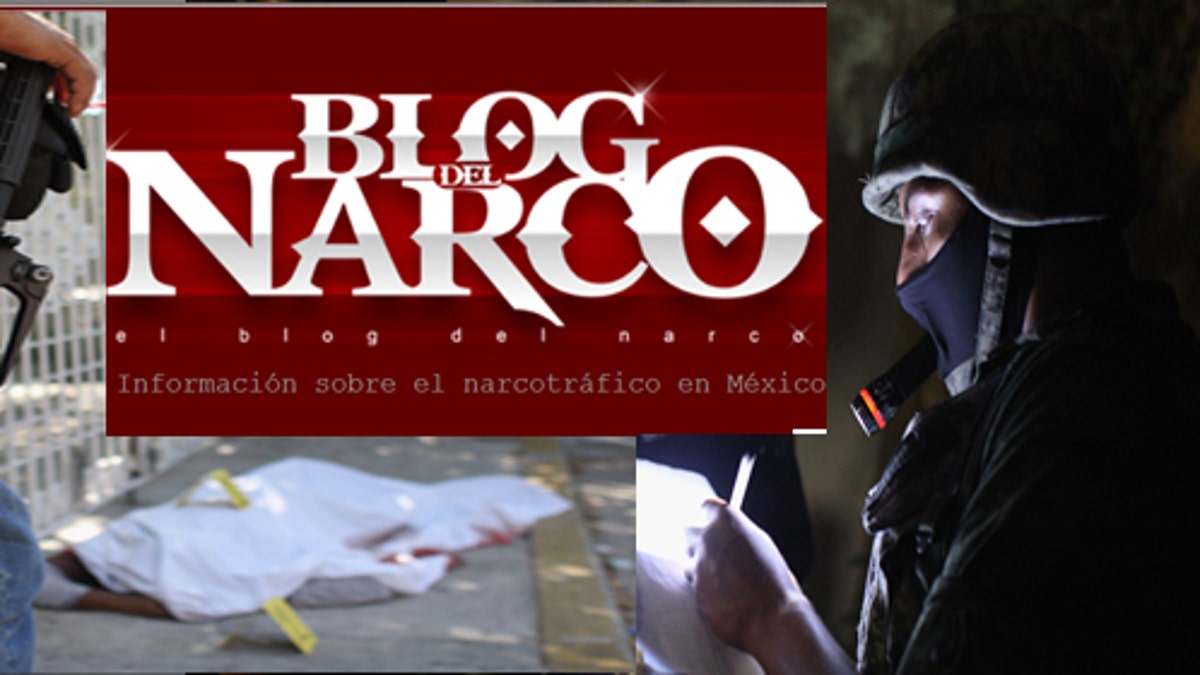
MEXICO CITY – For more than three years, a unique Mexican blog provided a window to the extreme brutality of the country’s drug war and was hailed as an example of brave citizen journalism. Now, “Blog del Narco” is at the center of an angry debate over accusations that it plagiarized news reports and gave criminals a public platform.
At the center of the dispute is “Lucy,” supposedly the young woman in charge of the blog, who says she had to run for her life for fear of being killed by drug traffickers. Her real name is not known — she has said wants to stay anonymous, again, fearing for her life. But Lucy gave some details of herself in interviews with media outlets before she fled from her home in northern Mexico: She is a single woman in her mid-20s who loves her country but could no longer remain in it.
Once out of Mexico, Lucy and her collaborators published a book with a title that speaks volumes about the hazards of delving into the violent world of drug trafficking: Dying for the Truth: Undercover Inside the Mexican Drug War by the Fugitive Reporters of Blog del Narco.
In the introduction, Lucy says the Blog del Narco — which has not been updated since early May but remains active in Twitter, where it has more than 81,000 followers — was founded because Mexican reporters were unwilling or unable to cover the drug war, a conflict that by most estimates has left at least 80,000 dead since former President Felipe Calderon launched an all-out offensive against the cartels immediately upon taking power in December 2006.
“These were the events that print journalists and TV news anchors should have been reporting to citizens, but their voices had largely been silenced,” according to the book’s introduction. “Then came defamation.”
That is a reference to critics of the blog, which featured scores of videos of gut-wrenching brutality — beheadings, amputations of limbs by chain saw, cruel torture, point-blank executions. The videos, supposedly sent anonymously to the blog, were the cartels’ way to demonstrate how they deal with rivals.
“Blog del Narco created a forum, a switchboard any group could use to post videos, photos and messages,” said Ioan Grillo, the Mexico-based author of “El Narco: Inside Mexico’s Criminal Insurgency”, an account of the illicit drug business based on years of reporting.
“Cartels are capable of challenging the government in some parts of the country, but have no spokesman, like some guerrilla organizations. These messages could give clues indicating which cartel was behind an incident, and what they were after,” Grillo added in an interview with Fox News Latino.
Blog del Narco’s ability to show the drug conflict’s violent reality from a perspective the mainstream media could not was one of the factors why it notched more than a million page views a month, according to the Internet tracking site Digsites.com — making it one of the most visited websites in the country.
“Where Blog del Narco stood out, and the reason it became very popular, is that it would show the material from drug cartels, the propaganda, the narco-mantas (banners), the photos, sent by people close to those organizations,” Grillo said. “There is also the morbid factor of people wanting to see splatter videos.”
Almost from its inception, in March 2010, Blog del Narco elicited concern from some traditional journalists in Mexico. But criticism became more vocal from the U.S. side of the border after Lucy announced she had fled Mexico — a move prompted by the alleged disappearance of her partner, a 27-year-old man who managed the blog’s technical side.
Soon after Lucy left, supposedly first to the United States and then to Spain, a regional public radio network reported that much of Blog del Narco’s material was lifted directly from other Mexican media outlets.
“Blog Del Narco reports on the exact same stories the Mexican journalists report on,” said an analysis on the website of the NPR regional network, Fronteras. “Yet the blog, and now a new book… claims they are the only ones reporting the truth in Mexico. The stories we reviewed show that those that weren't plagiarized were simply lifted verbatim from the exact same press releases of the government the blog criticizes.”
As Fronteras sees it, Lucy’s blog falsely claimed to be the last bastion of honest journalism in the country.
The U.S. publisher of the book, Feral House, responded to criticism by asserting that the Blog del Narco became a victim of its own success, its popularity fomenting “a great deal of resentment” both from drug cartels and the mainstream media.
But its existence, and its reporting, remained legitimate and valuable, Feral House noted.
In a statement, the publisher described the blog as an “information-gathering resource for material that was not otherwise available. People who wrote for Blog del Narco included hundreds of individuals who…had no desire to be ’credited’, since these credits could inflame cartel anger. As a result, Blog del Narco often became a repository of material from journalists, police and ordinary citizens who wanted to remain anonymous.”
As the controversy continues to spiral, among experts tracking Mexico’s violence, one fact is beyond dispute: Mexico is one of the world’s most dangerous countries for journalists. According the Mexico’s Federal Human Rights Commission, 84 journalists have been murdered since the year 2000. Another 20 have disappeared without a trace. Only 12 of these cases have resulted in convictions, according to the commission.
Lucy’s future as an alleged exile is uncertain. After a few weeks of silence, she launched a personal blog in June on her experiences in Spain. Since she arrived, she said in a blog post on June 9, she had moved several times within the country for security fears.
"I’m looking for peace but have not been able to find it so far.”
